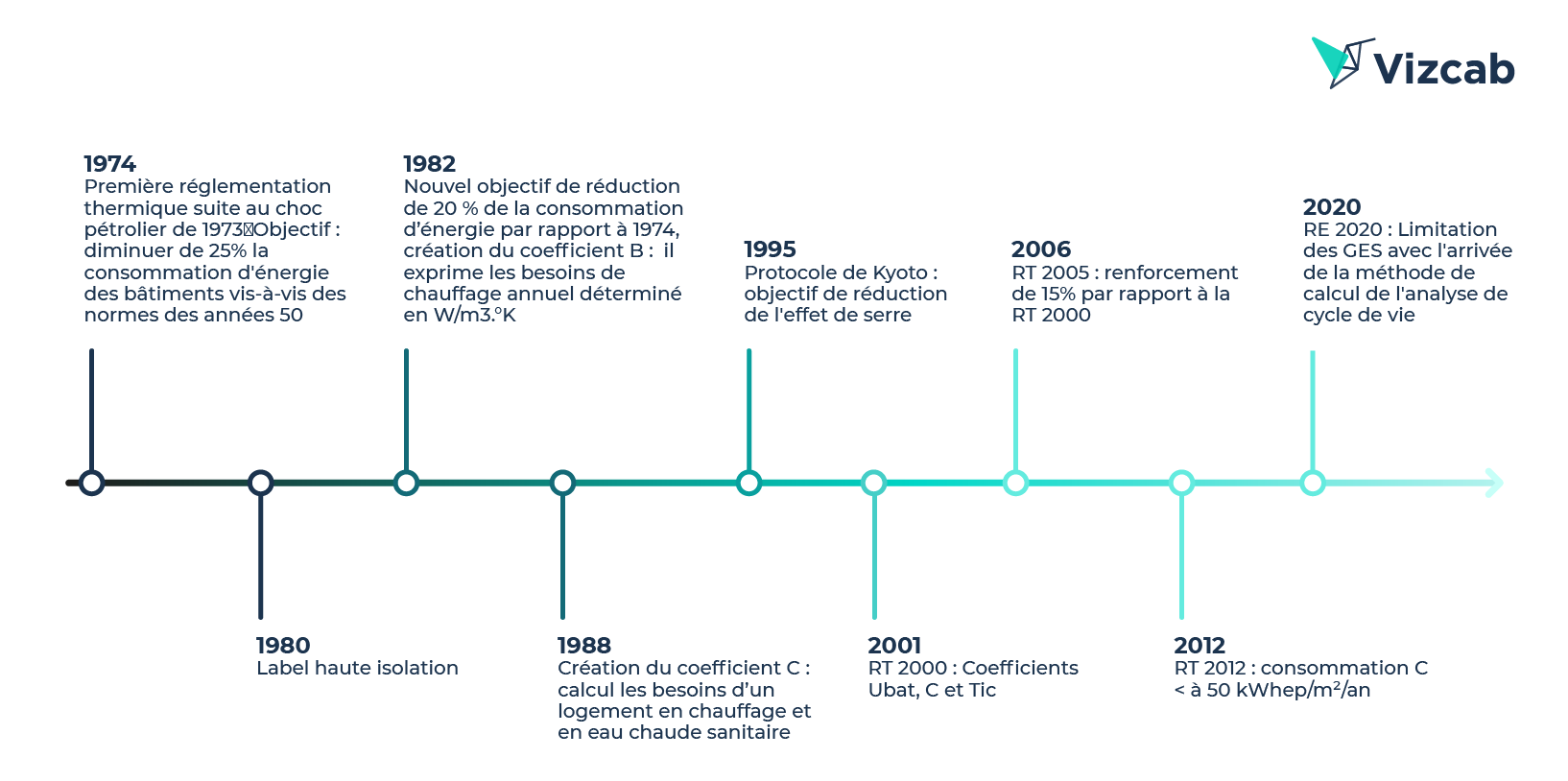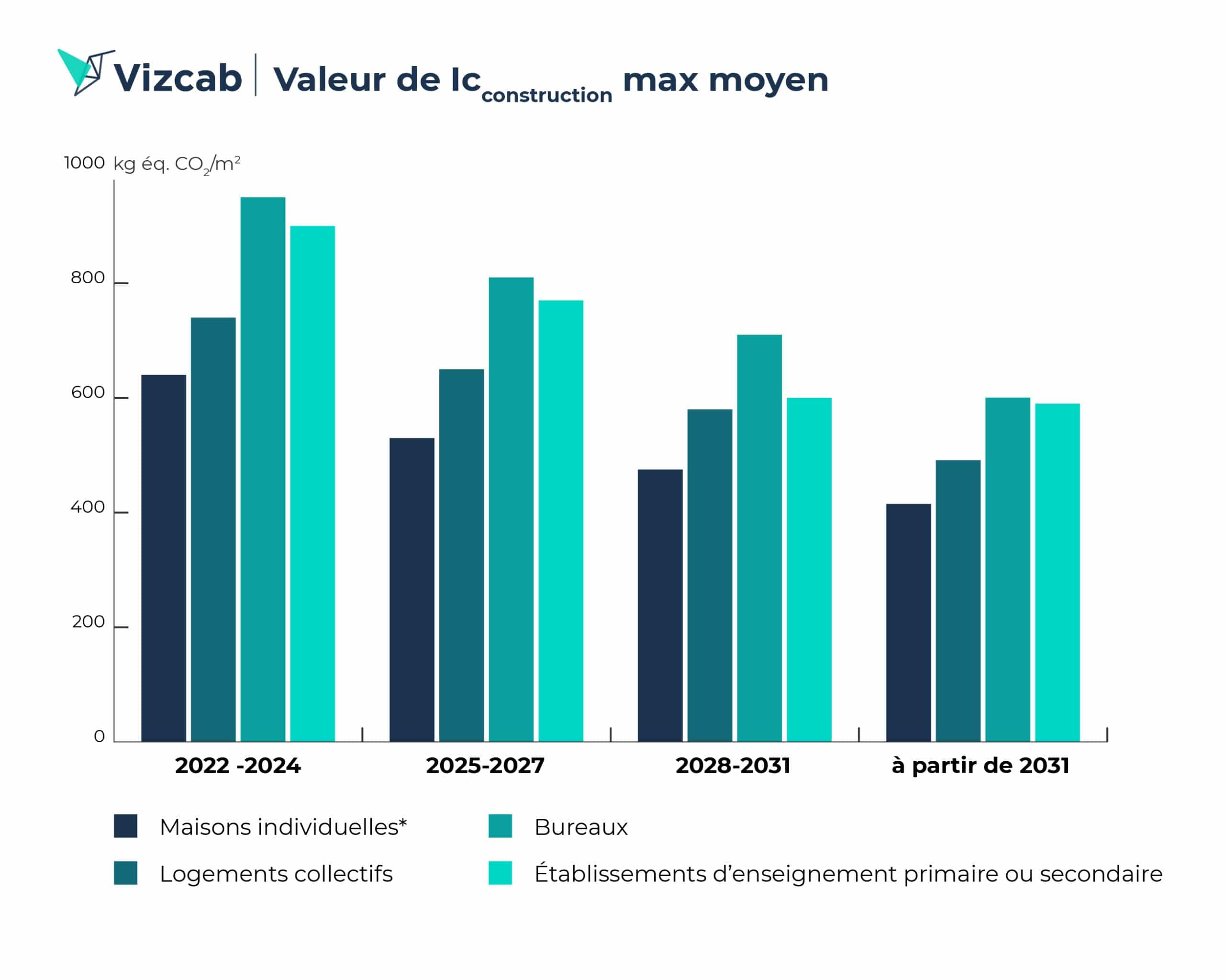L’étude environnementale d’un bâtiment est réalisée sur une période de 50 ans. Pour ce même bâtiment, un type précis de fenêtre est utilisé. Cette fenêtre a un impact A sur l’environnement.
Avec la méthodologie de l’expérimentation E+C- la méthode de calcul repose sur l’ACV statique : une fenêtre et celle qui la remplace 20 ans après affichent le même impact. Si chaque fenêtre a une durée de vie théorique de 20 ans, elle sera renouvelée 2,5 fois sur la période d’étude de l’ACV, soit 50 ans. Dans notre cas concret, l’impact pour une seule fenêtre à l’échelle du bâtiment est ainsi de 2,5xA avec la méthodologie d’ACV statique.
Avec la méthodologie dynamique de la RE 2020, l’impact de la fenêtre installée au début du chantier et l’impact de celle qui la remplace au bout de 20 ans n’est plus le même ! Le renouvellement de la fenêtre est pris en compte mais l’impact des fenêtres est pondéré dans le temps. Le gaz à effet de serre émis aujourd’hui pèse en effet plus lourd dans le calcul final que celui émis dans 20 ans.
👉 Finalement, l’ACV dynamique utilisée dans le calcul des impacts de la RE 2020 intègre la notion d’urgence climatique en pondérant les impacts en fonction du moment de leur émission, ce qui n’est pas le cas de l’ACV statique.









